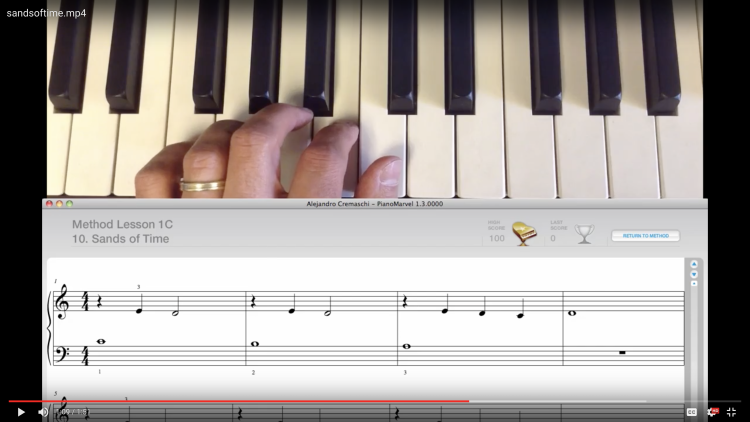Online summer piano course open for registration

Alejandro Cremaschi walks students through the basics of piano playing using custom videos and the tools Piano Marvel and Classroom Maestro.
This summer, Alejandro Cremaschi will teach a class of 15-20 students the finer points of beginner piano playing. They'll go through a sequence of fun piano pieces and learn about rhythm, reading music, hand placement and chords—and they'll do it entirely online.
“It presents a lot of opportunities and a lot of challenges,” Cremaschi says. “Students can work at their own pace, and the course is open ended so they have the opportunity to do more than what’s required. But I’m also not there to see their technique in person, and unlike a regular class, they’re not in the same room learning together with their classmates.”
The associate professor of piano pedagogy first started teaching the online course three years ago to accommodate students outside the College of Music who may be interested in composition or music technology.
“Piano is really the most accessible instrument. You can create harmonies, you don’t have to worry about intonation, you don’t need to spend six months learning how to make a sound from it. So a lot of people learn how to play the piano as a gateway to music.”
Though the class consists of more than a dozen students, Cremaschi says the online format means it works more like a one-on-one lesson. Students complete several assignments each week, progressing to more difficult pieces as the course goes on. The class culminates with a project that requires students to accompany a hit song song by Coldplay.
The coursework is facilitated by an electronic keyboard and an online tool called Piano Marvel, which work together to give students real-time feedback on their playing. Cremaschi also has students record videos of themselves playing so he can keep an eye on their positioning and coach them each week.

Videos from Cremaschi himself early on in the course lay the foundation for proper technique, showing multiple angles and thoroughly explaining the correct physical approach to playing the instrument.
To combat the loss of social support present in a classroom, Cremaschi has integrated group discussion into the course.
“Being around other people who are playing can be motivating and encouraging. So I have students share their videos with each other and comment on the other students’ playing.”
New for this semester, Cremaschi hopes to unveil a new technological solution to distance learning challenges: During his sabbatical, he’s been working with a group of computer science students to develop a tool that allows students to store and share video and MIDI files and do live conferencing all in one place.
He says he hopes to continue improving the app to meet a growing need in music in higher education.
“There’s a lot of interest in developing this course model, especially for faculty teaching non-music majors in group settings. We’re one of only a few colleges offering this kind of online introductory course, and I think there’s a future in this.”
The online piano course is open to non-music majors and takes place during Summer Session B, July 11 through Aug. 11. Look for Piano Class 1, MUEL 1115, Section 200 in the CU Course Catalog.


